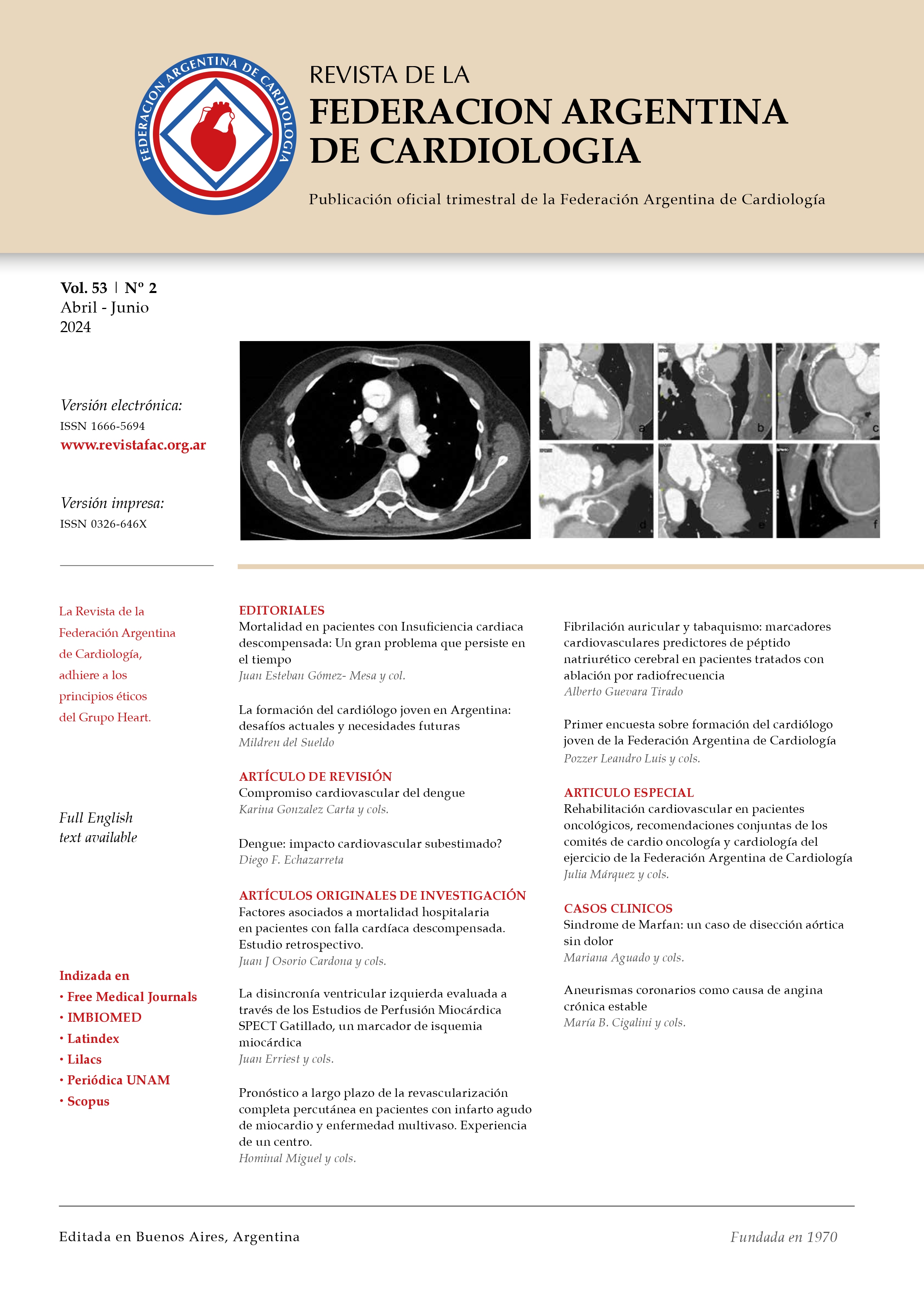Left ventricular dyssynchrony assessed by myocardial perfusion imaging Gated SPECT studies
a marker of myocardial ischemia
Keywords:
Gated SPECT, Phase Analysis, Coronary artery Disease, Left ventricular dyssynchrony, Myocardial perfusionAbstract
Aims: to demonstrate that exercise stress-induced ischemia, responsible for myocardial stunning, generates left ventricular (LV) dyssynchrony assessed using gated myocardial perfusion SPECT (GSPECT) and phase analysis. Methods: patients with suspected coronary artery disease, referred for GSPECT, were analyzed. The population was divided into two groups, and data obtained from GSPECT and LV synchrony analysis: bandwidth (BW), standard deviation (SD), and kurtosis (K) were compared between the two groups: Group 1 (G1) non-Ischemic (SSS 0) and Group 2 (G2) ischemic (SDS > 6 and SRS 0, ischemic extent > 9% of LV). Results: ninety patients were included, G1 n 45 and G2 n 45. G1 normal GSPECT vs G2 ischemic, SSS 0 vs 9 (7;12) p< 0.001; SDS 0 vs 9 (7;12) p < 0.001, respectively. Phase analysis parameters during stress in G2 showed dyssynchrony compared to G1 which were normal. G1 vs G2: BW 35 (29; 39) vs 57 (46; 68) p < 0.001; SD 10.8 (7; 20) vs 24 (17; 30) p < 0.001; and K 29 (21; 36) vs 21.7 (12; 32) p <0.014; respectively. At rest, LV synchrony parameters did not show statistically significant differences between the two groups. Conclusions: patients with myocardial ischemia have post-stress LV dyssynchrony, identified using phase analysis obtained from GSPECT.



